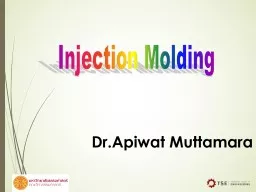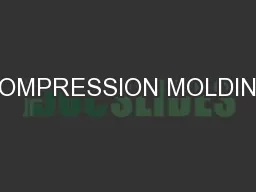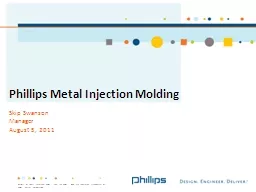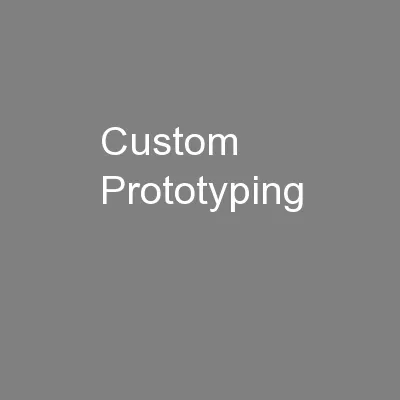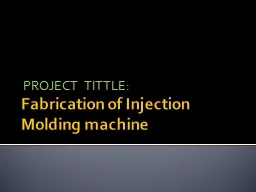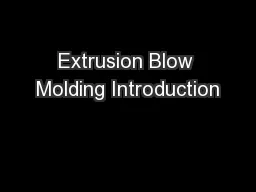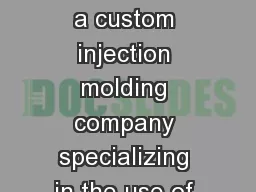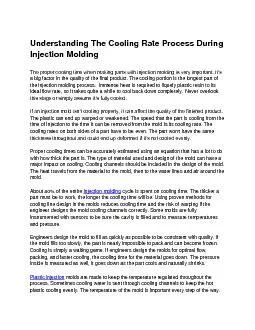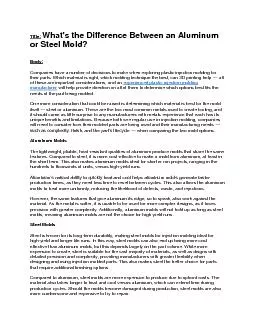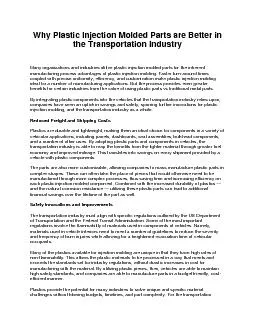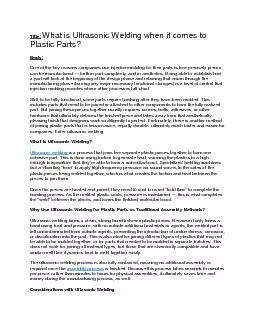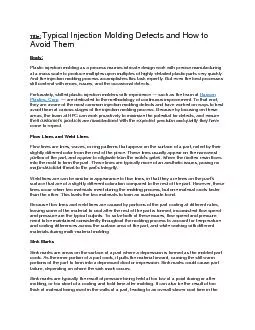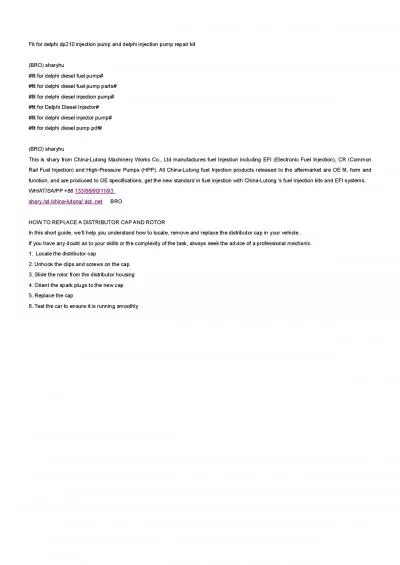PPT-1 Dr.Apiwat Muttamara Injection Molding
Author : danika-pritchard | Published Date : 2018-11-03
Outline Equipment and process steps Design for Part Design for manufacturing tooling and defects THERMOPLASTIC THERMOSET Thermoplastics are resins that can be
Presentation Embed Code
Download Presentation
Download Presentation The PPT/PDF document "1 Dr.Apiwat Muttamara Injection Molding" is the property of its rightful owner. Permission is granted to download and print the materials on this website for personal, non-commercial use only, and to display it on your personal computer provided you do not modify the materials and that you retain all copyright notices contained in the materials. By downloading content from our website, you accept the terms of this agreement.
1 Dr.Apiwat Muttamara Injection Molding: Transcript
Download Rules Of Document
"1 Dr.Apiwat Muttamara Injection Molding"The content belongs to its owner. You may download and print it for personal use, without modification, and keep all copyright notices. By downloading, you agree to these terms.
Related Documents

